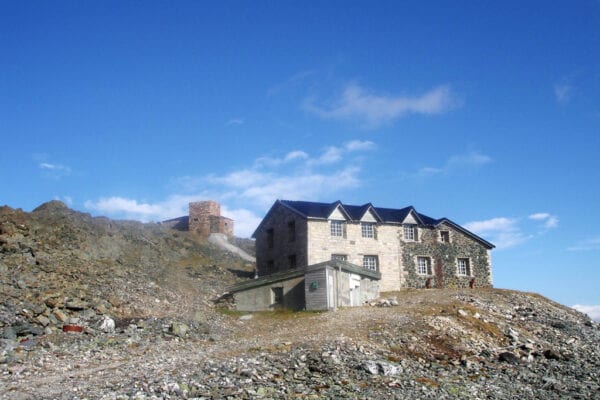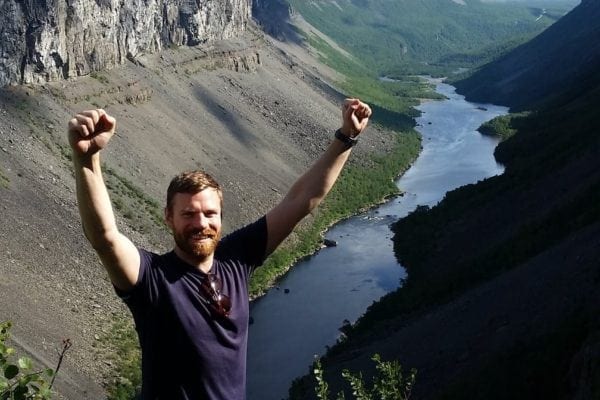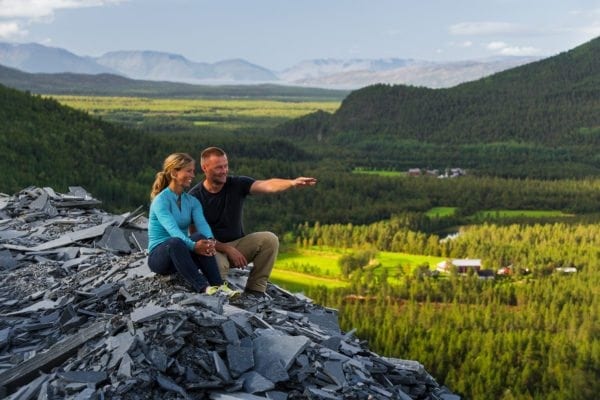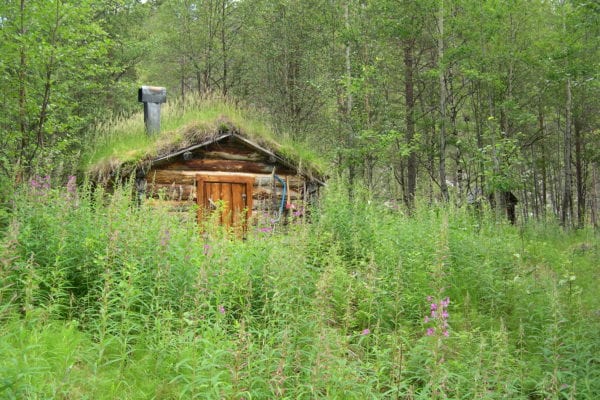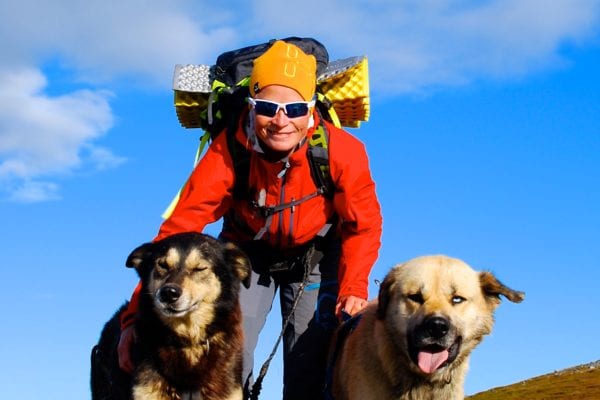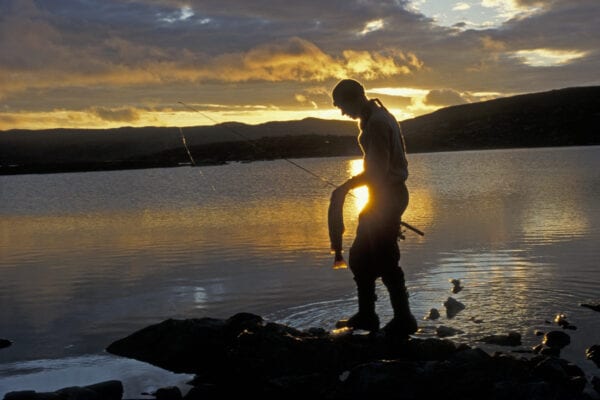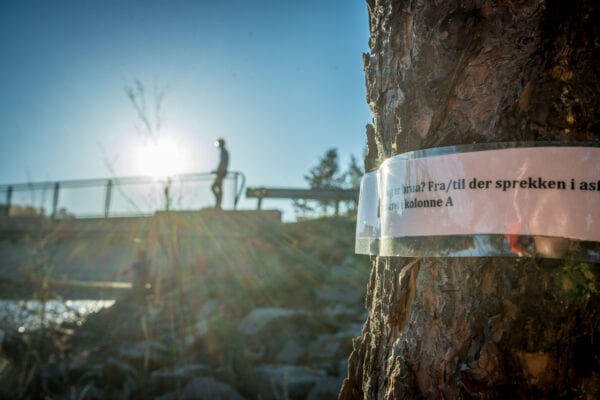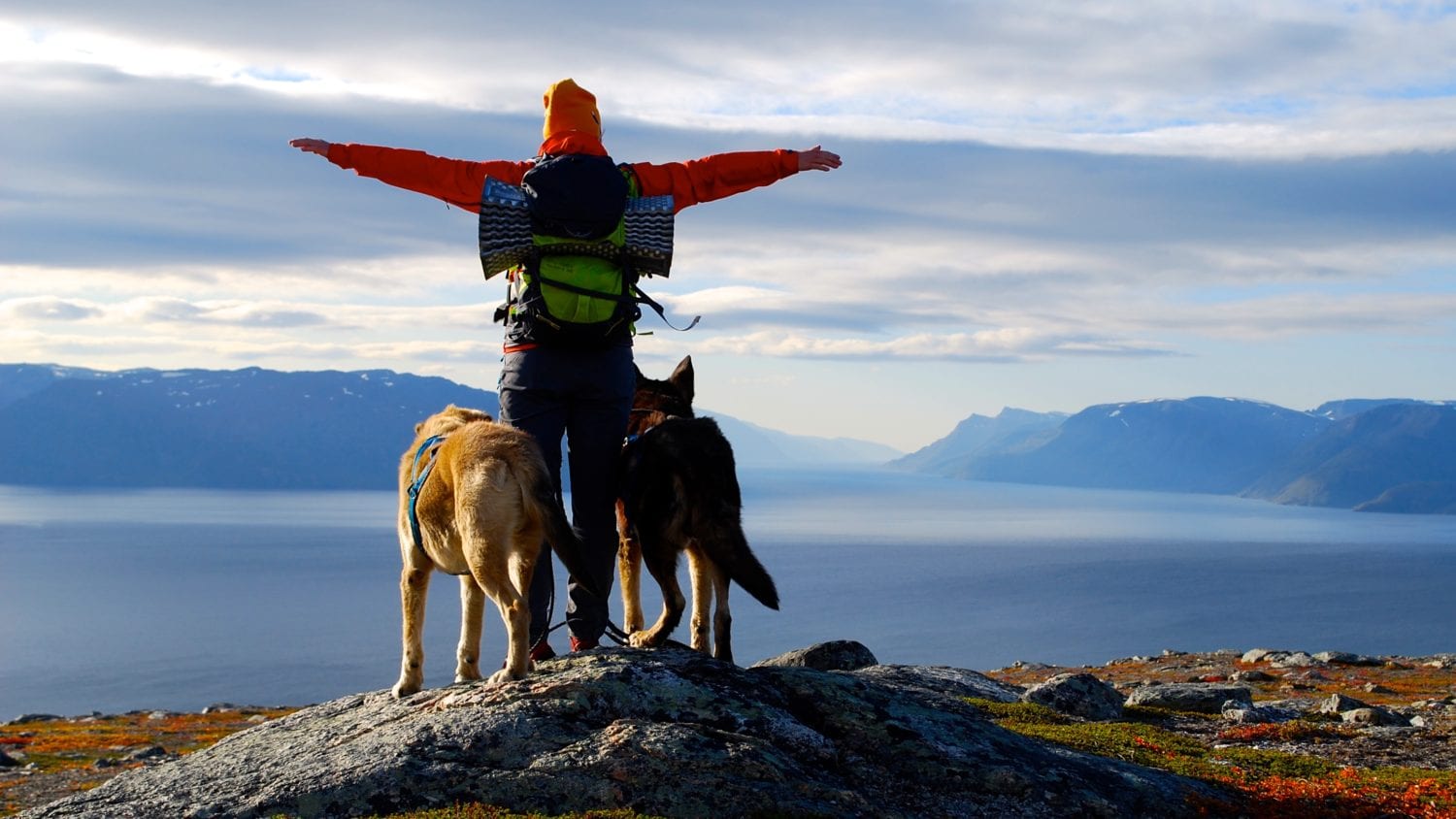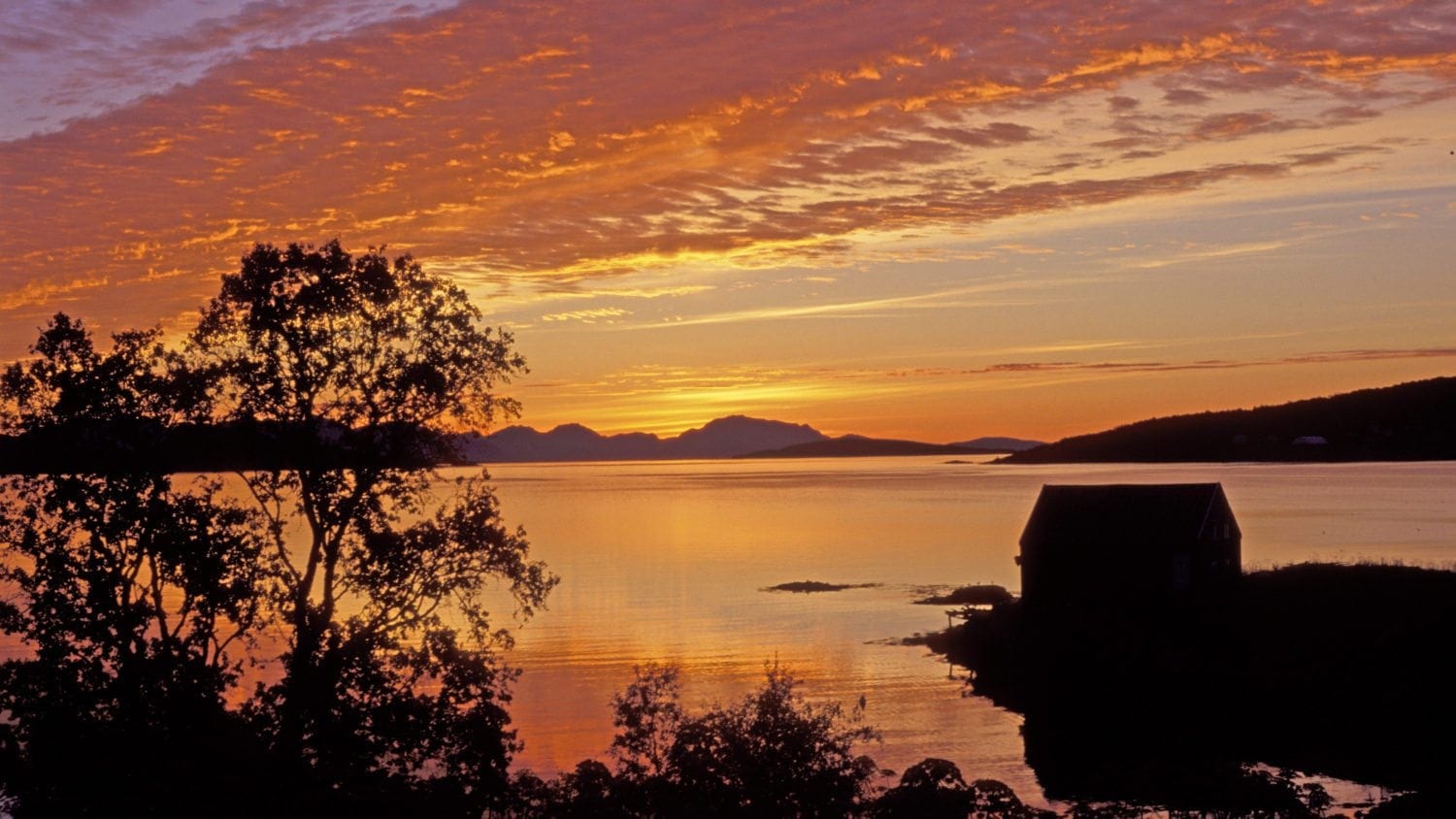Nature
Finnmark boasts varied nature, ranging from rolling mountain plateaus in the south, via mountains and fjords in the fjord areas to high alpine peaks in the west. The islands on the coast live their own life; some have sharp peaks and glaciers, while others are rounded and low, as if they will please theweather and wind.
The ice that covered these areas 10,000 years ago has set its clear traces. The open landscape reveals ancient lateral and terminal moraines and you can see clearly how mountains are scoured and weathered where the tremendous ice forces moved across the terrain.
Climate
Even in this vast Arctic landscape, flowers and trees thrive, as do animals and birds – and people too! This is largely due to the Gulf Stream, which brings warmer water far into the fjords and provides sheltered pockets, where even the coldest winter nights are not nearly as cold as they could be without these warm ocean currents. In the summertime, under the golden rays of the Midnight Sun, there is a hectic animal and plant life. There is a lot to grow and a lot to do before the autumn and winter set in.
Temperatures can drop below minus 40 ˚C in inland areas and rise to 25 ˚C on a fine summer’s day. However, neither are so common. People in this region rarely complain when the mercury drops or if the summer temperatures are cooler than expected. The majority think 15 ˚C is awesome and many find 20 ˚C too warm!
When the winter storm is raging bring rough weather, the risk of avalanches and road closures lasting days, most people of the north smile and say: “Vi står han av!”(We’ll sit it out)
When it comes to precipitation, the inland is mostly drier than the coast. However, it must be emphasized that generally the region is dry. Take for example Alta’s annual precipitation of 400 mm, which is less than in parts of the Sahara. Read more about weather statistics on yr.no.
Culture and industry
This part of the country is inhabited by Sami, Norwegians and Kvens (descendants of Finnish emigrants), all of whom are so hospitable and open that many visitors are amazed that this is possible. The hunting, trapping and gathering culture remains very much alive, and many have an enjoyable time in the nature, fishing in lakes and rivers, snaring grouse, hunting moose or in abounding cloudberry marshlands.
Some Sami people still practice traditional reindeer husbandry, following their reindeer herd on its summer migration out to the coast and back to the cold areas with more stable weather in Southern Finnmark in the winter. The meat they produce is world-class, and traditional Sami handicraft – doudji – offers wonderful household and decorative items.
The agriculture sector in this Arctic region produces milk, meat and some potatoes. The farmers proudly sell their products to an increasing degree locally to consumers who appreciate food that is locally produced and of high quality.
Mining and quarrying also have deep traditions in the north, which remain to this day. Examples include the slate industry in Alta, iron ore mining in Kirkenes – and soon also in Kvalsund, nepheline on the island of Stjernøya and Masi quartzite in inland areas.
Coastal fishermen continue to thrive, and the industry is experiencing increased recruitment. The spawning cod remains an extremely important resource, but the more recent entry of a new species – the King crab – means more people are choosing a profession at sea.
Midnight Sun and Polar Night
If you travel north of the Arctic Circle, you can experience the Midnight Sun. Yes, that’s literally what it means. The sun is above the horizon around the clock, even at midnight. The further north you travel, the longer the Midnight Sun season lasts. In the Alta area (latitude 69.58˚ N), the Midnight Sun season lasts from 19 May to 21 July. However, it’s light virtually around the clock about a month before and after these dates.
Likewise, north of the Arctic Circle there is a time of the year when the sun remains below the horizon. The further north you travel, the longer the period of darkness (known as the Polar Night) lasts. In the Alta area, the sun is below the horizon from 25 November to 17 January. However, it is not dark around the clock. Even on the darkest day (22 December), there are two to three hours of twilight in the middle of the day. We advise having a torch in your pocket during the Polar Night – and most people do!
Northern Lights
To put it briefly, the Northern Lights originate from energy that is released when charged particles from the sun (solar storms) hits particles in the atmosphere, 80-500 km from us. When they collide, the energy released is visible on the ground as light. This occurs year-round, but we can only see this light (the Northern Lights) when it’s dark enough. For the areas in Troms and Finnmark, this means that the Northern Lights are generally visible with the naked eye from 1 September to 15 April.
The strength of the Northern Lights activity is measured on the so-called KP scale (from 0-9). As our areas are located directly below the Northern Lights Oval, the Northern Lights activity does not have to be particularly strong before it’s visible here. KP1 is often sufficient.
Mountain lodges
On some of our trips, we visit, stay and eat and enjoy a relaxing hot sauna at one or more of the traditional mountain lodges on the Finnmarkvidda mountain plateau.
The mountain lodges offer basic accommodation in cabins and dormitories with 2-6 bunks. The mountain lodges have permanent keepers (hosts) and are equipped with crockery, kitchenware and linen. Although the hosts are not obliged to serve meals, most provide meals and/or sell basic groceries such as canned foods, margarine, flour and bread. Meals and saunas must be booked in advance. The same goes for beds, especially during the peak seasons. All the mountain lodges have a telephone and are open year-round.
The mountain lodges in Finnmark were built in the late 19th century and at one stage there were 40 such mountain lodges in the county. There were also previously more basic state-owned wilderness huts (resting places), which were open. These were equipped with bunks, mattresses, pillows, cooking utensils and cutlery, but not provisions. The state no longer operates such huts and many of these have now burnt down or fallen into a state of disrepair.

